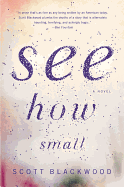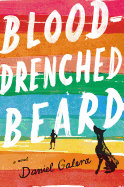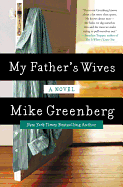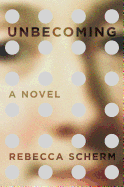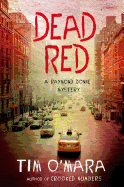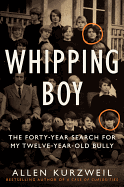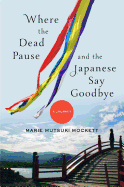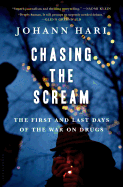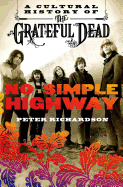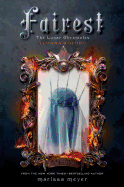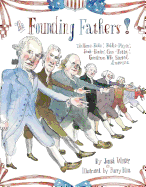 |
| photo: John Sinal |
John Vaillant's work has appeared in the New Yorker, the Atlantic, National Geographic and Outside, among other magazines. His two previous nonfiction books, The Tiger and The Golden Spruce, were award-winners and international bestsellers. Vaillant was born in Massachusetts and lives in Vancouver, B.C. The Jaguar's Children is his first novel.
Is Hector's story based on a specific incident?
The idea came from a conglomeration of different border-crossing incidents. There was one particularly awful case in which a boxcar load of immigrants attached to a train was taken across the border and never opened. It wasn't found for weeks, until it got to Iowa. Just a hideous, nightmarish situation. I started wondering, what happens in there? What would you go through? And then my family and I lived in Oaxaca for a year, 2009-2010. In Oaxaca, water trucks are a common sight. On one side, they read, "Agua por Uso Humano," "water for human use," and I kept thinking about that, and I kept thinking about thirst, and the anagram of agua and jaguar. It just fell into place. All these disconnected observations and ideas gradually coalesced. There was a moment when this fellow, the narrator, just announced himself to me, in January 2010.
This is your first published work of fiction. What led you here from your nonfiction books?
Trying to find a container that was suitable for the story I wanted to tell. Needless to say, Oaxaca is a really interesting place--Mexico is full of stories. There was a nonfiction story that was jaguar-related that I was pursuing and actively researching down there, and for a couple of reasons it didn't fully coalesce. A lot of what I was experiencing were more like travel anecdotes, but I didn't want to write a travel book. It felt too trivial. So then I asked, how do I take all of these things I'm seeing and hearing and feeling and put them all together in a place where they will make sense and hang together and create a synergetic narrative and a picture of what is going on down there right now? And the novel was the right form.
This is also somewhat of a departure from your writing about the relationship between people and the natural environment.
I'm really interested in hearing voices that I, or we, don't usually get to hear, so that's in a sense what the books are about: creating a platform for these people or beings who are generally invisible, to get some air time. You know, it's not a selfless, altruistic mission on my part--I'm really curious and I want to see what that world is like. I want to understand it better and re-create it in a way that feels authentic. Ideally people who live that life, whether they're tigers or conservationists or biologists or foresters or Mexicans in Oaxaca, will feel that their realities were accurately reflected. So the whole natural world connection is almost incidental, honestly. For me, those margins where human beings and the natural world collide, that's where the most dynamic tension is. It's a kind of a front line, and also a fault line. Whether it's human beings and corn, or human beings and thirst, or human beings and tigers, or the forest, there is a common thread. But it's certainly not intentional; it's just where my natural interest seems to go.
Did you go to Oaxaca with a book or a story in mind?
I was deep in The Tiger then. I was in the middle of edits, and to be perfectly honest, all I wanted to do was finish that book, lie in a hammock and read books that didn't have tigers in them. Or any other big cats. That really was the plan.
And here we are.
Here we are. That's the beauty of the muse, really. All the books I've done have really come unannounced. It wasn't a premeditated objective to write any of those stories, they've all come to me, and I see them as gifts of sorts. Really time-consuming ones. This again came right when I was just about wrapping up The Tiger and ready to read Under the Volcano or some other books about Mexico. And instead, Hector showed up.
Hector's perspective is of a Mexican indio from Oaxaca, and his voice is convincing.
I do have a strange, kind of inside track to Mexico. For three generations, my father's family lived there, and I grew up steeped in Mexican lore as it was refracted through their experience. My grandfather was a well-known archeologist who wrote the first comprehensive history of the Aztec nation, a book called Aztecs of Mexico. My grandmother told us many stories about him. Her house, all her kids' houses, including my father's, were filled with things from Mexico, some of them very very old, none of them more modern than 1930 because that's when they came back. So Mexican art and artifacts were featured in my upbringing, as were stories of my grandfather.
In what ways was your year in Oaxaca helpful?
My wife is a potter and an anthropologist, and she wanted to spend time with traditional Mexican potters. I would follow her around in her trips to these villages, quite remote and very very traditional, so we'd meet people who didn't speak any Spanish at all. People who have never really succumbed to the dominant culture. They were nominally Christian, but observing and worshiping traditional deities and certainly pursuing traditional practices, whether it was ceramics or agriculture. So it was really like going into another world. I had a notebook and a camera and my innate curiosity. The fact that I had a deep Mexican connection in the family gave me more of a motive to try to understand it. What was it that kept three generations of my family down there when they were all Americans? And perfectly well-connected Americans; they could have had fine lives up here, but for some reason Mexico was the place that offered them something different, something more.
But ultimately this is a story about a Zapotec guy from southern Mexico. Think about the U.S./Mexican border: it's the most active border on the planet, the site of the largest human migration on earth, and Oaxaqueños play a huge role in that. One in three people from that state go to the States at some point to work, most of them illegally. And all kinds of things happen to them. As I came to understand that, it just started to feel more and more important.
And there was another inspiration. Just as I vowed not to read any more books about tigers, my father-in-law gave me The White Tiger by Aravind Adiga, which won the Booker Prize in 2008. It's a wonderful novel about a low-caste, indigenous guy from northern India, who notices that there's something big going on in Bangalore and Delhi. Big money is being made. He's very smart, but he just doesn't understand the system well enough to know even how the money's being made. And that's how a lot of indigenous Oaxaqueños approach the U.S.--they may have family up there, they may not, but they do not understand the culture terribly well--or often the hazards of the journey, which are many, and can be absolutely lethal. So you have these people who are capable in their sphere but naïve about the wider world, making the journey north, and a lot of them come to grief on the border.
Was this book as difficult or traumatic to write as it may be to read?
I wondered a lot about why I would want to return to this place over and over again, and go back into that truck. It's a hideous, deadly place. But I thought, nobody else is probably going to do this. And this is something that happens to people, that shouldn't be happening. And Hector was a very compelling person. But as far as difficulty goes--it was extremely difficult. The novel is a different animal, so to speak, than nonfiction, and certain narrative tools do translate, but being in that voice and pacing it and dealing with the other voices... really was new to me. You're not really the same after doing something like that. I look at the world differently and feel it differently as a result of spending so much time there.
So the challenge of immersing yourself in the painful subject matter was ultimately rewarding, which I think is the case for readers as well. This is about more than just a nightmarish border-crossing incident.
So much of the book isn't about that. It's really about being a young person in a very troubled--some could argue broken--society and first trying to find his place in it, and then ultimately having circumstances align in such a way that he has to leave. The time you spend in the truck is desperate and terrible, but also you get to see how strong Hector is, and what he's made of. He's extraordinary in some ways, but he's not superhuman. It's amazing what people survive. It's amazing the kind of clarity and wisdom those kinds of stressors can evoke and inspire. I think it's a crucible for him and for his character. I think all of us undergo tests, some of them truly terrible--it's part of the human experience. Hector is a guy trying to figure it out. Trying to survive at the immediate level, but also at the cultural and occupational levels. The world is changing really fast around us. There are pressures being brought to bear that I have no control over, so what do I have control over? How should I respond to the people around me, to those who are trying to help me and those who are trying to impede me or hurt me? In that sense it feels like a kind of fundamental story. --Julia Jenkins
John Vaillant: Looking at the World Differently




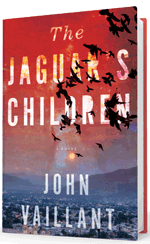


 Just over 40 years ago, Knopf published The Power Broker: Robert Moses and the Fall of New York, Robert Caro's exhaustive biography of the man who for much of the 20th century put an everlasting mark on New York City and the state of New York by building and rebuilding many of the area's parks, highways and bridges. The book shows Moses's accomplishments--particularly in building much-needed parks and recreational facilities--but also highlights his increasingly brutal, arrogant, vindictive approach to "urban renewal." Over time this led to the destruction of many New York City neighborhoods and some pristine land as Moses came to favor building ever more highways--even through the center of Manhattan--at the expense of mass transit, of development and appreciation of the city's waterfront and of keeping viable neighborhoods intact. (His decisions were especially painful for local baseball fans, since they led to the move of baseball's Brooklyn Dodgers and New York Giants to the West Coast.) Besides being an astounding portrait of an influential urban planner, The Power Broker is a detailed history of New York.
Just over 40 years ago, Knopf published The Power Broker: Robert Moses and the Fall of New York, Robert Caro's exhaustive biography of the man who for much of the 20th century put an everlasting mark on New York City and the state of New York by building and rebuilding many of the area's parks, highways and bridges. The book shows Moses's accomplishments--particularly in building much-needed parks and recreational facilities--but also highlights his increasingly brutal, arrogant, vindictive approach to "urban renewal." Over time this led to the destruction of many New York City neighborhoods and some pristine land as Moses came to favor building ever more highways--even through the center of Manhattan--at the expense of mass transit, of development and appreciation of the city's waterfront and of keeping viable neighborhoods intact. (His decisions were especially painful for local baseball fans, since they led to the move of baseball's Brooklyn Dodgers and New York Giants to the West Coast.) Besides being an astounding portrait of an influential urban planner, The Power Broker is a detailed history of New York.